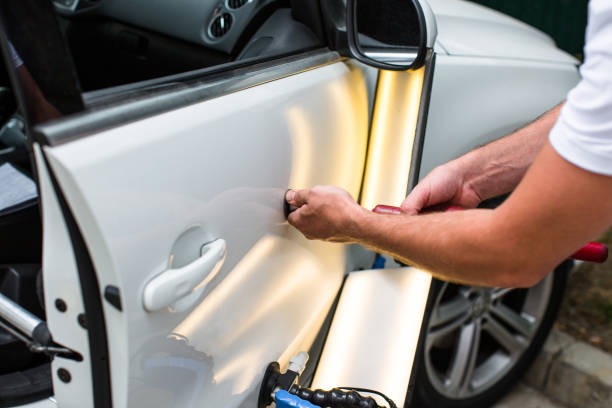Every car owner dreads the thought of getting into an accident. Not only is it a traumatic experience, but it also leaves your vehicle with visible dents and scratches that can be disheartening to look at. However, with the right tools and techniques, repairing car bodywork after a collision can be a relatively simple task. In this article, we’ll guide you through the process of restoring your vehicle to its former glory.
- Assess the Damage
The first step is to assess the damage to your vehicle’s bodywork. Start by inspecting the car’s exterior for any visible dents, scratches or cracks. Open the hood and check the engine compartment, radiator, and other components for any signs of damage. Depending on the severity of the collision, you may also need to inspect the undercarriage and suspension.
- Gather the Tools and Materials
Once you’ve assessed the damage, it’s time to gather the necessary tools and materials. You’ll need a range of bodywork repair tools, including a hammer, body filler, sandpaper, and spray paint. It’s important to choose high-quality products that are compatible with your vehicle’s make and model.

- Start with the Dents
Dents are one of the most common forms of damage after a collision. To repair a dent, start by cleaning the affected area and using a hammer or a rubber mallet to gently tap the metal back into place. Once the dent is almost flat, use body filler to smooth out any remaining imperfections. Allow the filler to dry completely, then sand it down to a smooth finish.
- Fix Scratches and Cracks
Scratches and cracks can be fixed using touch-up paint or a spray paint can. First, use sandpaper and rubbing alcohol to clean the affected area. Apply the touch-up paint in thin, even layers, allowing each layer to dry before applying the next. Once the paint has dried, use sandpaper to smooth out any bumps or unevenness in the finish.

- Paint the Affected Area
If the damage is more severe, you may need to repaint the entire affected area. Before beginning, make sure the surface is clean and dry. Use masking tape to cover any areas you don’t want to be painted. Apply the paint in thin, even layers, and allow each one to dry completely before applying the next. Once the paint has dried, remove the masking tape and polish the surface to a smooth finish.
Repairing car bodywork after a collision can be a daunting task, but it’s not impossible. With the right tools and techniques, you can restore your vehicle to its former beauty. Remember to assess the damage, gather the necessary tools and materials, and take your time to ensure a flawless finish. With these tips in mind, you’ll be well on your way to repairing your car’s bodywork after a collision.




